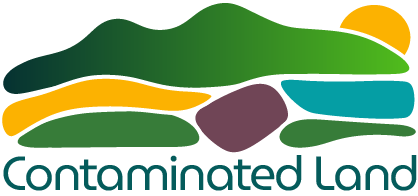In situ chemical oxidation/reduction (ISCO/R) is a remediation technique used to treat contaminated soil and groundwater by applying chemical redox processes directly at the site of contamination. The approach works by either oxidising or reducing pollutants to transform them into less harmful or more biodegradable substances. Organic contaminants may be fully destroyed, while inorganic pollutants such as cyanides or chromium can be converted into less toxic or less mobile forms. For instance, hexavalent chromium [Cr(VI)], a known carcinogen, can be reduced to the less harmful trivalent form [Cr(III)]. The method has been applied both in the vadose and saturated zones, though saturated zone treatments are generally more straightforward due to the continuous presence of water.
A wide range of chemical agents can be employed in ISCO/R, depending on the site conditions and target contaminants. Oxidants include Fenton’s reagent, permanganate, and persulphate, which aggressively break down organic molecules. Reductants such as zero-valent iron (ZVI), sodium dithionite, and calcium polysulphide are used particularly for inorganics and persistent compounds. These reagents can be introduced into the subsurface through sparging (for gaseous agents like ozone), in situ flushing (for liquids), or direct injection (for slurries). Nanoparticles such as nanoscale ZVI (nZVI) offer enhanced mobility and reactivity and can be combined with sorbents like activated carbon to increase effectiveness, as seen in products like Carbo-iron®.
ISCO/R is considered advantageous due to its potential for rapid treatment, complete contaminant destruction, and the relative accessibility of reagents. However, there are important limitations and risks. The effectiveness of the approach often depends heavily on how well the reagents can be distributed through the subsurface, which can be hindered by soil heterogeneity or low permeability. Incomplete contaminant breakdown, unintended changes in groundwater chemistry, and physical impacts on soil and aquifer structure are also concerns. Some reagents, such as Fenton’s reagent, pose safety risks to workers, and others, such as permanganate, may cause undesirable side effects like water discolouration or ecological toxicity.
This technology is most commonly used to treat organic contaminants like VOCs, SVOCs, PCBs, pesticides, PFAS, and explosives, as well as inorganics like chromium and cyanide. It is primarily implemented in the saturated zone, but can be part of source and pathway management strategies. ISCO/R can be combined with other remediation methods, such as bioremediation or electrokinetic systems, to enhance effectiveness or overcome limitations. While it avoids excavation and can mitigate long-term human health risks, regulators may require robust monitoring due to potential hazards and environmental impacts. Deployment must be carefully planned, especially in sensitive hydrogeological settings, to ensure that the benefits of contaminant removal outweigh the risks of subsurface disruption.


